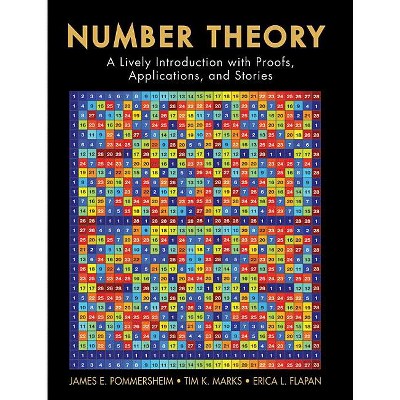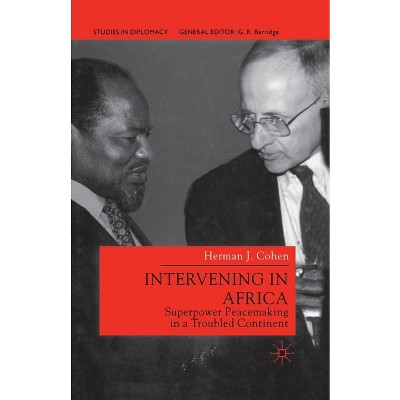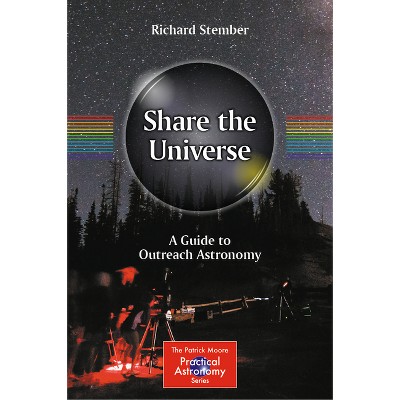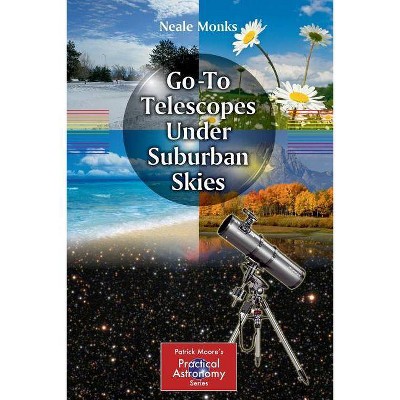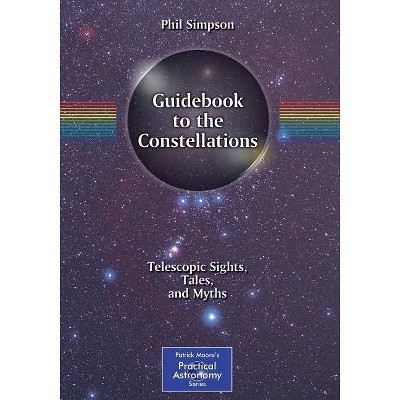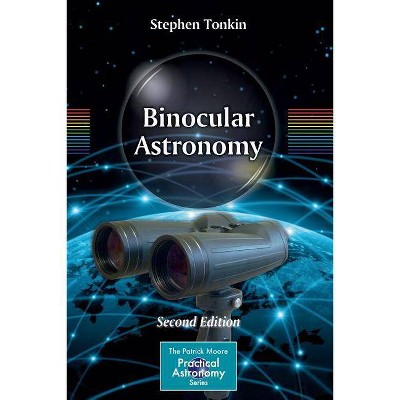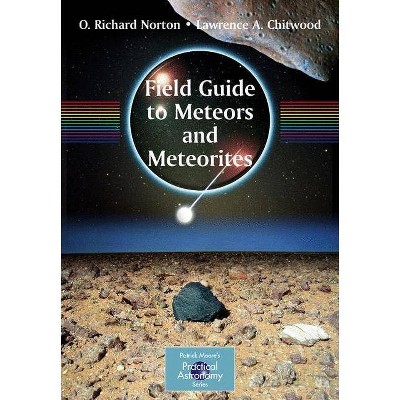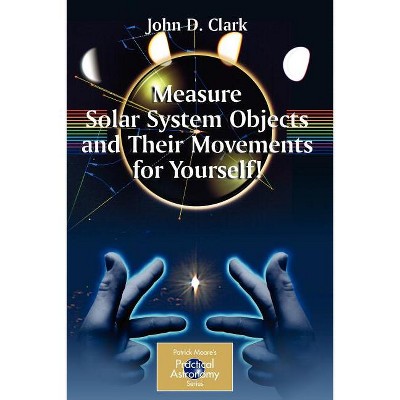Sponsored

The Complete CD Guide to the Universe - (Patrick Moore Practical Astronomy) by Richard Harshaw (Hardcover)
In Stock
Sponsored
About this item
Highlights
- This is the largest and most comprehensive atlas of the universe ever created for amateur astronomers.
- About the Author: Richard Harshaw lives in Kansas, where he works as a consultant.
- 120 Pages
- Science, Astronomy
- Series Name: Patrick Moore Practical Astronomy
Description
About the Book
This is the largest and most comprehensive atlas of the universe ever created for amateur astronomers. It provides a detailed observing guide for almost any practical amateur astronomer. Spanning some 3,000 pages, this is a project that is possible only on CD-ROM.
Book Synopsis
This is the largest and most comprehensive atlas of the universe ever created for amateur astronomers. It is the first major observing guide for amateurs since Burnham's Celestial Handbook. With finder charts of large-scale and unprecedented detail, in both normal and mirror-image views, and an extensive list of 14,000 objects, it provides a detailed observing guide for almost any practical amateur astronomer, up to the most advanced. The atlas has about 270 double star images and sketches, and 590 or so deep-sky images and sketches. Spanning some 3,000 pages, this is a project that is possible only on CD-ROM. The CD-R pages are extensively indexed and referenced for quick location of objects, areas, classes of objects etc. The accompanying book gives an introduction to the Atlas, showcases the maps (thus buyers can see what they are getting without running the CD-R), describes the CD-R content and organization, and includes various appendices. This is much more than just a catalog of objects.
From the Back Cover
This guide contains descriptions and charts for a total of almost 14,000 objects, and is probably the largest and most comprehensive Atlas of the Universe ever created for amateur astronomers.
Spanning some 13,000 pages, this is a project that is possible only with Springer Extras.
The atlas covers the whole range of objects viewable by amateur astronomers with 8 - to 11-inch telescopes, north of about latitude +40 degrees. Everything described here can be observed from suburban sites. Large-scale finder charts - in both normal and mirror-image "SCT" views - along with the extensive list of 14,000 objects provide a detailed observing guide for almost any practical amateur astronomer.
Around 10,750 of the objects are double or multiple stars; the remaining 3000 or so represent the other classes of deep-sky objects. Double stars dominate this work for two reasons. First, for telescopes of modest aperture they are by far the most numerous type of object and second, double stars are usually bright enough to be easily observed from urban sites. The other deep-sky objects include many galaxies (1573 of them), and although dark-sky sites are of course best, many of these can be seen in skies that most amateurs would write off as hopeless for the task. There are 580 open clusters, 109 globular clusters, 148 planetary nebulae, plus a few others.
The Complete CD Atlas of the Universe is a resource that could easily provide the basis of a whole lifetime of observing!
Review Quotes
From the reviews:
"Amateur astronomer Harshaw (Stardeck Observatory, MO) compiled this recent entry in the 'Practical Astronomy' series. ...The CD-ROM is well organized; it includes bank observing forms and images of more than 10,000 double stars, more than 1,400 galaxies, and other objects reachable by an amateur-size telescope. ... Charts are of excellent quality. ... Summing Up: Recommended. General readers." (M. -K. Hemenway, CHOICE, Vol. v4 (3), November, 2007)
"The printed part of the book contains clear and simple explanations of some of the basics of amateur astronomical observing ... . The heart of the work is the CD-ROM with finding charts and the listing of the 13,238 objects. ...Overall, for those amateurs in the northern hemisphere of a taxonomic bent this CD atlas would be of great assistance." (Nick Lomb, Australian Physics, Vol. 44 (4), 2007)
"Patrick Moore in his book, 'Atlas of the Universe' brings many of the wonders of this space ... . The universe is big but this book makes it all very manageable. ... the book is a veritable treasure of information and pictures suitable for the young and uninitiated who want to learn more of the universe in which Earth travels. ... With copious pictures and well rounded phrases, anyone can use this book to help them travel off-planet to wherever their eyes lead them." (Mark Mortimer, Universe Today, September, 2006)
About the Author
Richard Harshaw lives in Kansas, where he works as a consultant. During his 40 years of practical observing, (seventeen of them with large-aperture instruments) he has received eight Astronomical League observing awards, and has published measurements of approximately 1,600 double stars.
His many published papers include Third Degree Views (The Webb Society's Deep Sky Observer, No. 121, Summer 2000); Color in Double Stars (Deep Sky Observer, No. 116, April 1999); An Investigation Into Discrepancies In the Washington Double Star Catalog (Deep Sky Observer, No. 129); On Double Identities, Recovered Pairs, and Optical Imposters in the Washington Double Star Catalog (Webb Society Double Star Section Circular No. 12, 2004); New Measures for Some 'Neglected' Double Stars of the Washington Double Star Catalog (Double Star Section Circular No. 12, 2004); Possible Quadrant Reversals in the WDS Catalog 2001.0 (Double Star Section Circular No. 11, 2003).
Shipping details
Return details
Trending Non-Fiction




